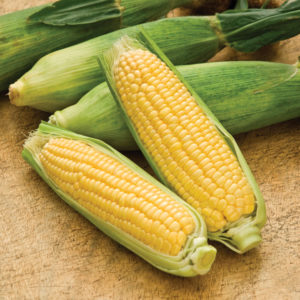 Corn fell for the first time in three sessions as drier weather in the U.S. is expected to support planting, following the record wettest three months in Iowa, the biggest U.S. grower, which delayed planting.
Corn fell for the first time in three sessions as drier weather in the U.S. is expected to support planting, following the record wettest three months in Iowa, the biggest U.S. grower, which delayed planting.
On the Chicago Mercantile Exchange, corn futures for July delivery fell 0.67% on the day and traded at $6.6113 a bushel at 9:25 GMT. The grain ranged between session low of $6.6088 and high at $6.6438 a bushel.
According to the U.S. Department of Agriculture’s report last week, around 91% of the corn crop in the world’s largest grower has been planted, up from 86% the previous week. Planting was completed by that time last year. The USDA said on May 10 the U.S. will harvest a record 359.2 million tons this year even though the area sown to corn may 93.5 million acres, 3.9% less than forecast in March. That would still leave production 23% higher than last year’s reduced to drought crop, said Morgan Stanley on June 3.
Joyce Liu, an analyst at Phillip Futures Pte. said by e-mail for Bloomberg: “There were some impressive weather-related premiums built up in corn prices in the last two trading sessions due to expectations wet weather will be delaying corn planting. After all, with 91 percent already planted at the end of last week and a short window of good weather for planting early last week, how bad can delayed planting be.”
Elsewhere on the grains market, soybeans and wheat declined today. Soybeans for July delivery traded at $15.2063 a bushel at 9:31 GMT, down 0.44% for the day. Soybeans kept on gaining last week as increased demand was draining U.S. last year crop inventories.
According to the U.S. Department of Agriculture, soybeans inventories in the U.S. will drop 26% to 125 million bushels before this year’s harvest. This is the lowest level since nine years. U.S. exporters have already sold 36.62 million metric tons of the 36.74 government prediction. The USDA said in its weekly crop progress report that 57% of the nation’s crop was planted as of June 2. This is 13% higher than last week, but still significantly below the five-year average of 74%. As of June 2 2012, 93% of the soybeans crop was planted.
Wheat futures for July delivery lost 0.54% today and stood at $6.9225 a bushel at 9:22 GMT. Wheat prices were pressured downward last week as favorable conditions in the Black Sea region suggested increased supply from Russia and Ukraine. Reduced demand for U.S. wheat also had its negative impact on wheat prices last week as the USDA reported an unauthorized genetically modified strain was found in Oregon. This caused Japan, South Korea and Mexico to cancel orders, resulting in a 33 200 tons export reduction in the week ending May 30.
According to USDA’s report on June 3, 73% of the winter wheat crop was planted as of the week ending June 2, compared to 60% in the preceding week, which shows a stable advance. However, this is still lower than the 80% five-year average and the 88% planted during the same week last year. Winter wheat condition is also worse than last year. The USDA reported 42% of the crop falls in the “very poor” and “poor” categories, 31% is “good” and “excellent” and 25 has a “fair” quality. Last year 18% was categorized as “very poor” and “poor”, 30% as “fair” and 52% was “good” and “excellent”.





